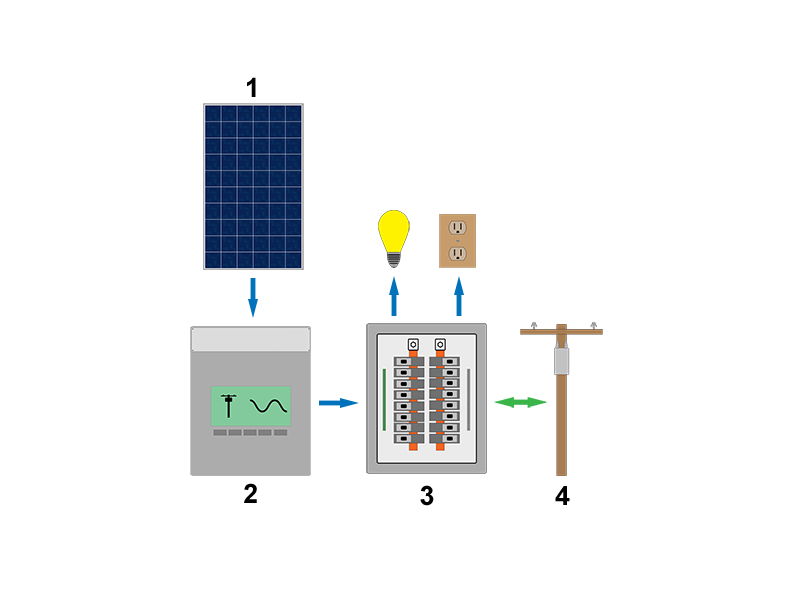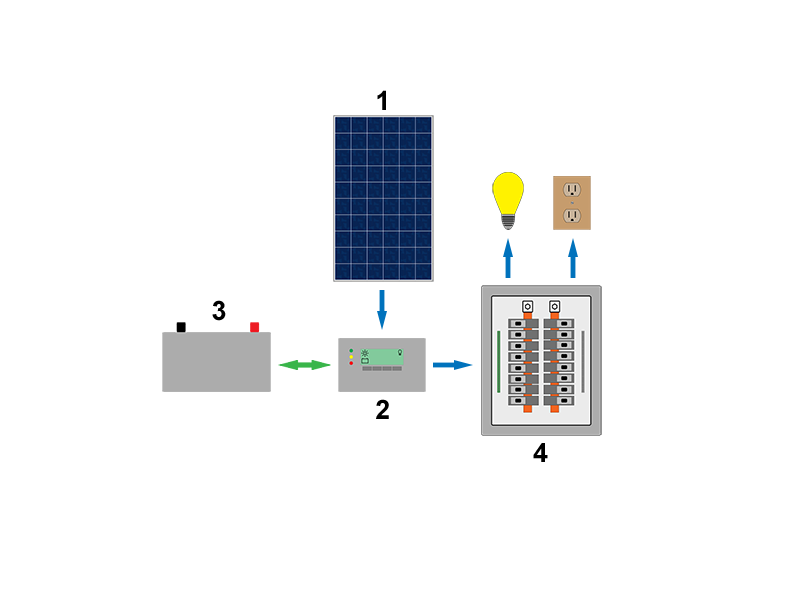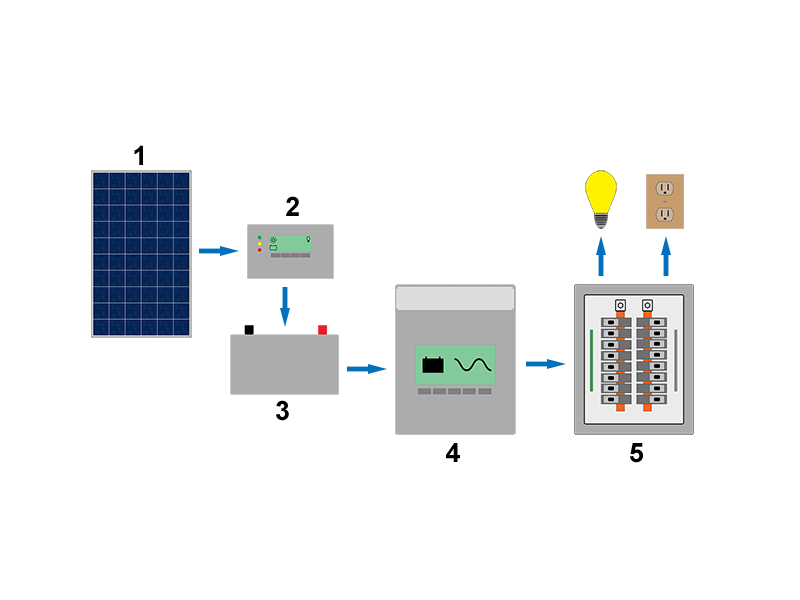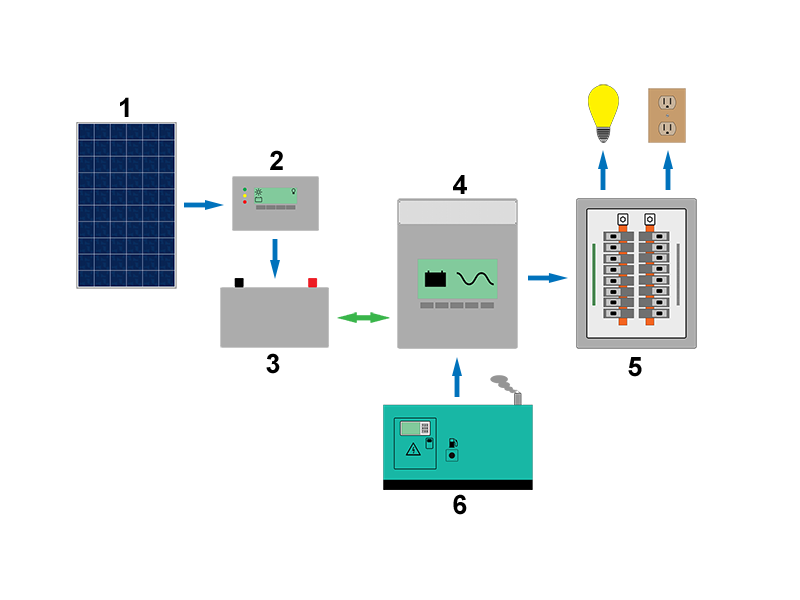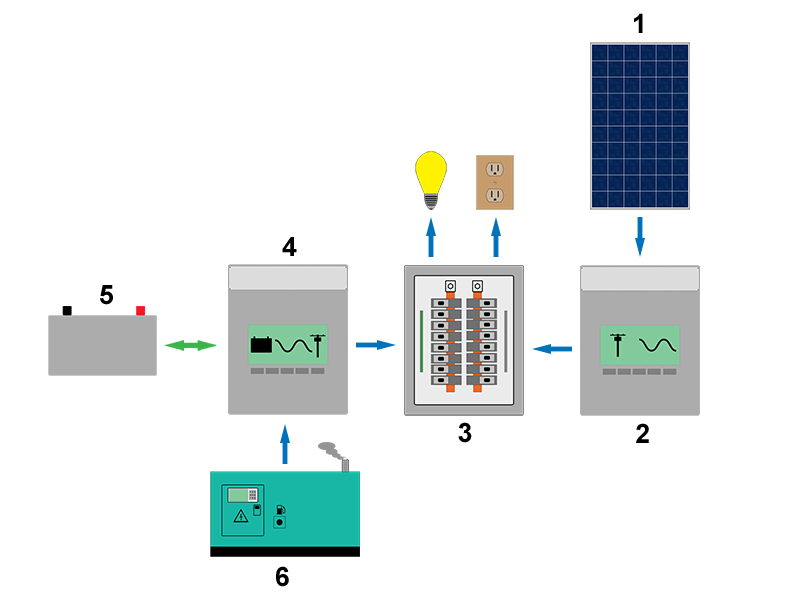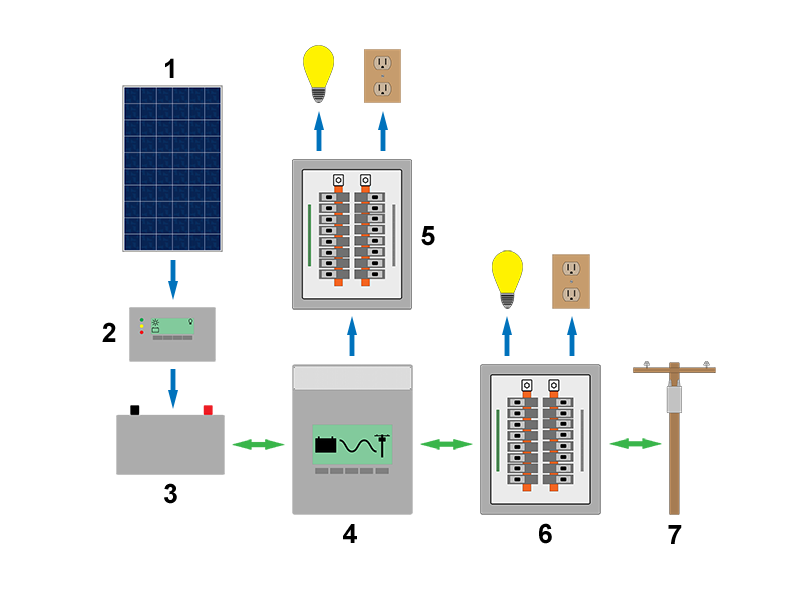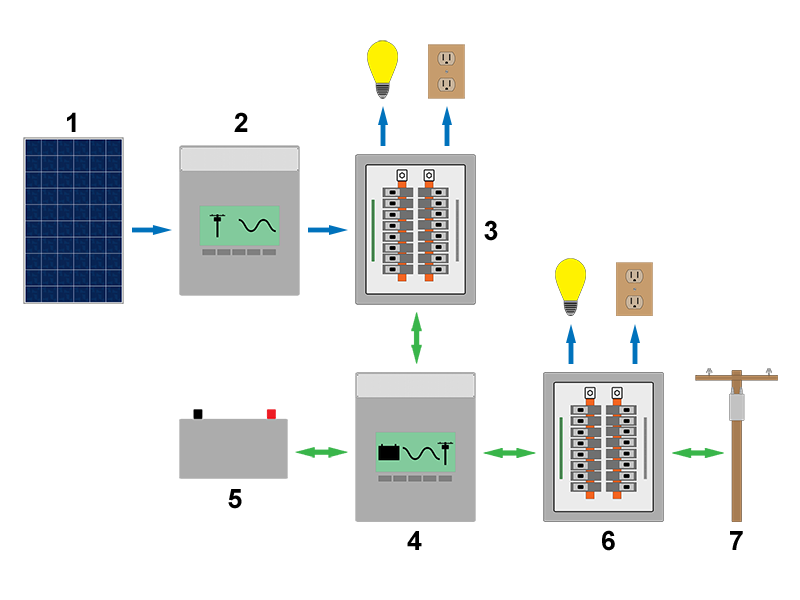PV system types
Grid-tied PV systems
PV systems installed that have a grid connection are called grid-tied systems. The inverters that come with these types of systems are called interative as they are capable of interacting with the grid by matching its voltage and frequency. As a system of this type produces energy, it must either be consumed on the presmises or it will be fed back into the grid - through a meter - to be used by other customers. These systems cannot store energy and do not provide backup power in the case of a power outage. The majority of PV systems installed globally are of this type.
Stand-alone systems
PV systems installed in areas that lack a grid connection are called stand-alone systems, but are also commonly referred to as battery-based or off-grid systems. These systems take many different forms, but they almost always incorporate some type of storage, typically a battery bank, and one or more charging sources. In addition to solar PV, these systems may include a generator, wind, or hydro as well. These systems with multiple charging sources may also be referred to as hybrid systems. Stand-alone systems can use alternating current and direct current as charging sources and can supply alternating and direct current for loads. The various different stand-alone system types are depicted below.
